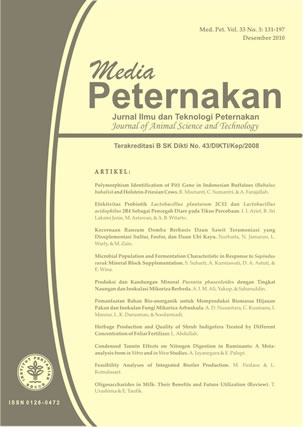Oligosaccharides in Milk: Their Benefits and Future Utilization
DOI:
https://doi.org/10.5398/medpet.2010.33.3.189Keywords:
milk, oligosaccharides, prebiotic, BifidobacteriumAbstract
The percentage of carbohydrate in the milk/colostrum of the mammalian is range from trace to over 10%, of which disaccharide lactose (Gal(β1-4)Glc) is usually constitutes the major part. Apart from the lactose (Gal(β1-4)Glc; Gal, D-galactose; Glc, D-glucose), the rest of carbohydrate components is composed of variety of sugars, commonly named as milk oligosaccharides. Human mature milk and colostrum contain 12 ~ 13 g/l and 22 ~ 24 g/l of oligosaccharides, respectively. In contrast, bovine colostrum contains more than 1 g/l oligosaccharides and this concentration rapidly decreases after 48 hr post partum. Most of human milk oligosaccharides (HMO) are resistant to digestion and absorption within the small intestine. Therefore they can reach the infant colon, where they can act as prebiotics that stimulate the growth of beneficial microorganisms such as various species of Bifidobacterium. They can also act as receptor analogues that inhibit the attachment of pathogenic microorganisms to the infant's colonic mucosa. A small part of the milk oligosaccharides is absorbed intact into the circulation and it has been hypothesized that these may act as immunomodulators. Generally, the bovine milk oligosaccharides are believed not to be absorbed by human adults or infants, thus making them available to be utilized as prebiotics or anti-infection materials. The colostrum of cows and other domestic farm animals is a potential source of free oligosaccharides, and oligosaccharides isolated from these natural sources can be utilized as functional foods or animal feedstuffs on the industrial scale.



